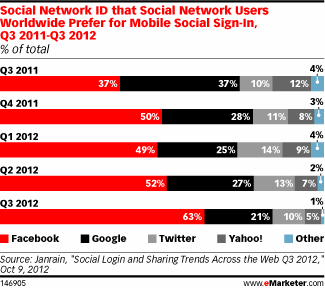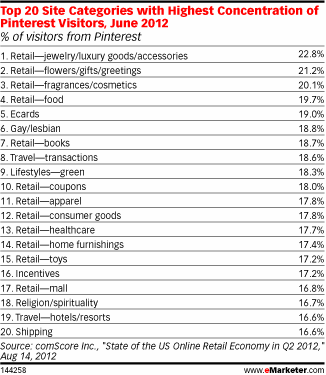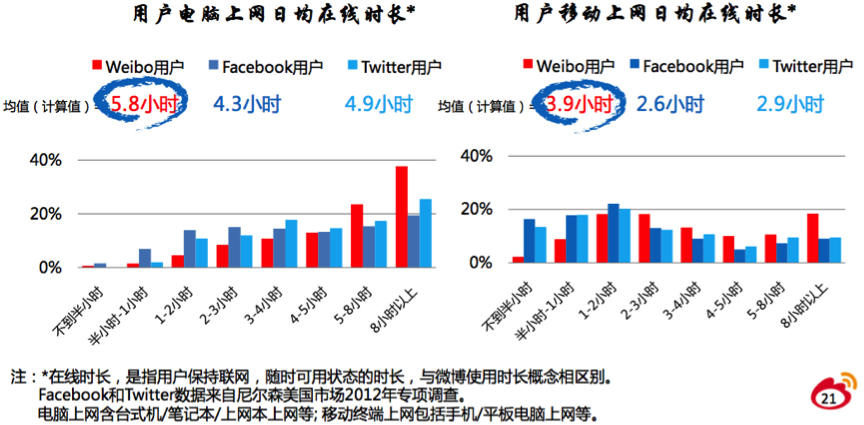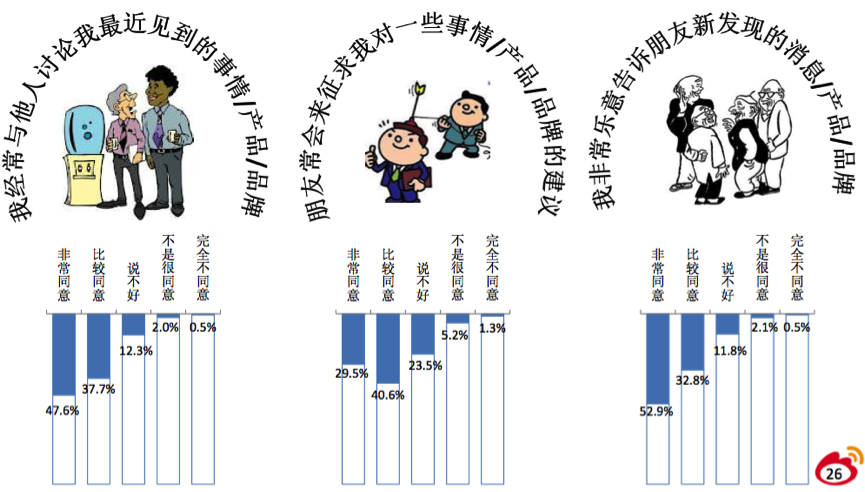Five Friday Facts #53

Sina Weibo’s potential for commercialisation
Sina has just released a user behaviour report on the opportunities available for brands and marketers. The extensive report on its consumers’ behaviour also compares Sina Weibo with other platforms such as Facebook and Twitter. One of the key findings from the report was that Sina Weibo users spent more time on the platforms as compared to Facebook and Twitter users. On average, its users spent 5.8 hours a day on the site from personal computers, whilst Facebook and Twitter users only spent 4.3 and 4.9 hours a day respectively. Similarly, of those who accessed the platforms from mobile devices, Sina Weibo users spent 3.9 hours daily on average ,whilst Facebook and Twitter users spent 2.6 and 2.9 hours a day respectively.
Another key finding from the report was the influence riends had on brands that Sina Weibo users followed. 85.3% of weibo users said that they often discussed new brands or products they have recently found on Sina weibo, whilst an impressive 70.1% said that their friends ask them for suggestions on products or brands on Sina Weibo.
Tencent reports strong growth across its social networks
In its Q3 report, Tencent has reported some latest user numbers for its different services and platforms. It reports 783.9 million monthly active users across its various instant messaging services. QQ and WeChat have clearly beefed up this number. Tencent’s social networking sites Qzone and Pengyou were reported to have 592.8 and 258.9 million month active users respectively. With a US$ 1.8 billion in revenue and US$ 511 million in profit, it has been another profitable quarter for Tencent. A detailed highlight of the Q3 report can be found here.
Indonesians using social media to air their complaints
Though the use of social media in dealing with customers’ complaints is fairly common in Western countries, this practice has merely just taken off on the other side of the globe. A recent study focusing on the banking and telecommunications industry of Indonesia by Convergys Corporation indicates that 11% of the customers surveyed employed social networking sites to get their problems solved. Compared with the popularity of phone calls (74%) and text messages (40%), new technologies still have a long way to go before claiming a substantial position among customer service solutions. However, Indonesia is booming in its social media growth having added 2 million new Facebook fans in the month of October alone and with Jakarta being the most active city in the world for Twitter usage. The country’s current smartphone penetration rate is also at a high 62%, which is continuing to emerge as the choice of device to access social media platforms. It is hence clear why brands in Indonesia are responding to the need to adapt their strategies in order to cater to the accelerating expectations of timely responses on customer service queries on social media platforms.
Facebook leads social sign-ins to websites
Over the years, Facebook has struggled to emerge as the choice of social sign-ins to other sites. However, a study on social sign-ins onto media sites show that Facebook is now leading with 53% of all social sign-ins. Similarly with music sites, Facebook has garnered 66% of all social sign-ins whilst Google came in second with only 14%. The popularity of Spotify has fueled much of this growth. Facebook’s dominance is now also extended to mobile social sign-ins as shown in the chart below. 63% of mobile social signs are via Facebook, which is double the social logins a year ago. Google’s share has also shrunk to just a third of that of Facebook’s.

1 in 6 travel site visitors are Pinterest users
Undoubtedly, fashion marketers have reaped the benefits from Pinterest-based marketing campaigns. The power of visually pleasing images and real-time updates doesn’t stop just there. Comscore’s study of the US’s economy for Q2 2012 points out that the potential for many more online retail categories. In particular, a high concentration of Pinterest users (18.6%) visit travel websites with transaction-oriented content. For travel websites featuring information about hotels and resorts, 16.6% of the visits came from Pinterest.


